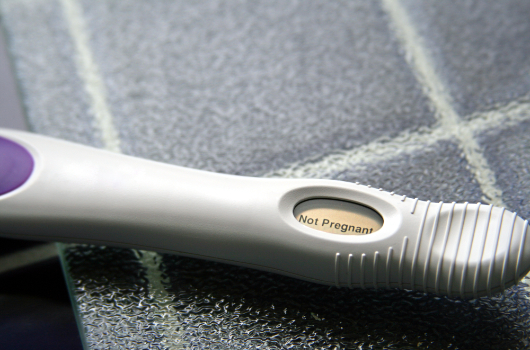US STI Positivity Trends
Updated: August 2025
Get Updates
HealthTrackRx
Trend Update
Urinary tract infections (UTIs) are one of the most common reasons for outpatient visits in the United States, particularly among women, children, and older adults. Each year, uncomplicated UTIs alone cost the U.S. healthcare system an estimated $1.6 billion, largely driven by clinic visits, diagnostic testing, and empirical antibiotic use1. Accurate and timely identification of uropathogens is essential for guiding treatment decisions, improving patient outcomes, and supporting antimicrobial stewardship. This report summarizes UTI pathogen positivity trends observed from January through July 2025, highlighting seasonal shifts in organism prevalence and notable antibiotic resistance patterns—particularly in E. coli, the most frequently detected pathogen.
US STI Positivity Trends
Updated: August 2025
Get Updates
HealthTrackRx
Trend Update
Urinary tract infections (UTIs) are one of the most common reasons for outpatient visits in the United States, particularly among women, children, and older adults. Each year, uncomplicated UTIs alone cost the U.S. healthcare system an estimated $1.6 billion, largely driven by clinic visits, diagnostic testing, and empirical antibiotic use1. Accurate and timely identification of uropathogens is essential for guiding treatment decisions, improving patient outcomes, and supporting antimicrobial stewardship. This report summarizes UTI pathogen positivity trends observed from January through July 2025, highlighting seasonal shifts in organism prevalence and notable antibiotic resistance patterns—particularly in E. coli, the most frequently detected pathogen.
E.coli
Jan-Apr 2025: 22.9%
May-July 2025: 24.0%
E. coli remains the predominant uropathogen, accounting for 22.9% of positive cases from January to April and rising slightly to 24.0% in the May to July period. This modest increase is consistent with E. coli’s continued role as the leading cause of community-acquired urinary tract infections, particularly among women and pediatric populations.2
Antibiotic Resistance Insight:
- Tetracycline resistance was observed in 7% of E. coli-positive samples, which is an important treatment in genitourinary pathogens that cause recurrent or persistent infections, such as Mycoplasma genitalium and Ureaplasma species.
- Bactrim resistance (trimethoprim-sulfamethoxazole) was seen in 8%, underscoring the need for resistance-guided prescribing.
Enterococcus faecalis, faecium
Jan-Apr 2025: 4.8%
May-July 2025: 5.5%
Enterococcus species were identified in 8% of cases in early 2025, rising to 5.5% during the summer months. These organisms are more frequently associated with complicated or catheter-associated UTIs. Their increased summer detection may reflect more frequent urinary instrumentation or increased colonization during warmer weather.3
Klebsiella pneumoniae, oxytoca
Jan-Apr 2025: 3.2%
May-July 2025: 3.9%
Klebsiella species accounted for 2% of positive results from January to April and increased to 3.9% in May to July. These pathogens are known for their potential to harbor multidrug resistance and are often seen in both community and healthcare-associated infections.4
Proteus mirabilis, vulgaris
Jan-Apr 2025: 1.4%
May-July 2025: 1.6%
Proteus species were identified in 4% of cases early in the year and 1.6% during the summer. These organisms are commonly associated with UTIs in patients with urinary tract abnormalities or indwelling catheters and can contribute to stone formation due to urease activity. Antimicrobial resistance is a growing concern, with multidrug-resistant and extended-spectrum β-lactamase (ESBL)-producing strains increasingly reported, especially in nosocomial settings.5
Staphylococcus saphriticus
Jan-Apr 2025: 0.9%
May-July 2025: 1.5%
Although less common, S. saprophyticus showed a relative increase – from 9% to 1.5%. Staphylococcus saprophyticus is a leading cause of acute uncomplicated urinary tract infections, particularly in young, sexually active women, where it accounts for a significant proportion of community-acquired cystitis cases, second only to E. coli in this demographic.6
Pseudomonas aeruginosa
Jan-Apr 2025: 0.7%
May-July 2025: 0.8%
P. aeruginosa positivity remained low and relatively stable, increasing slightly from 0.7% to 0.8%. As an opportunistic pathogen, it is more commonly associated with healthcare settings, structural urinary tract abnormalities, or prior antibiotic exposure.7
E.coli
Jan-Apr 2025: 22.9%
May-July 2025: 24.0%
E. coli remains the predominant uropathogen, accounting for 22.9% of positive cases from January to April and rising slightly to 24.0% in the May to July period. This modest increase is consistent with E. coli’s continued role as the leading cause of community-acquired urinary tract infections, particularly among women and pediatric populations.2
Antibiotic Resistance Insight:
- Tetracycline resistance was observed in 7% of E. coli-positive samples, which is an important treatment in genitourinary pathogens that cause recurrent or persistent infections, such as Mycoplasma genitalium and Ureaplasma species.
- Bactrim resistance (trimethoprim-sulfamethoxazole) was seen in 8%, underscoring the need for resistance-guided prescribing.
Enterococcus faecalis, faecium
Jan-Apr 2025: 4.8%
May-July 2025: 5.5%
Enterococcus species were identified in 8% of cases in early 2025, rising to 5.5% during the summer months. These organisms are more frequently associated with complicated or catheter-associated UTIs. Their increased summer detection may reflect more frequent urinary instrumentation or increased colonization during warmer weather.3
Klebsiella pneumoniae, oxytoca
Jan-Apr 2025: 3.2%
May-July 2025: 3.9%
Klebsiella species accounted for 2% of positive results from January to April and increased to 3.9% in May to July. These pathogens are known for their potential to harbor multidrug resistance and are often seen in both community and healthcare-associated infections.4
Proteus mirabilis, vulgaris
Jan-Apr 2025: 1.4%
May-July 2025: 1.6%
Proteus species were identified in 4% of cases early in the year and 1.6% during the summer. These organisms are commonly associated with UTIs in patients with urinary tract abnormalities or indwelling catheters and can contribute to stone formation due to urease activity. Antimicrobial resistance is a growing concern, with multidrug-resistant and extended-spectrum β-lactamase (ESBL)-producing strains increasingly reported, especially in nosocomial settings.5
Staphylococcus saphriticus
Jan-Apr 2025: 0.9%
May-July 2025: 1.5%
Although less common, S. saprophyticus showed a relative increase – from 9% to 1.5%. Staphylococcus saprophyticus is a leading cause of acute uncomplicated urinary tract infections, particularly in young, sexually active women, where it accounts for a significant proportion of community-acquired cystitis cases, second only to E. coli in this demographic.6
Pseudomonas aeruginosa
Jan-Apr 2025: 0.7%
May-July 2025: 0.8%
P. aeruginosa positivity remained low and relatively stable, increasing slightly from 0.7% to 0.8%. As an opportunistic pathogen, it is more commonly associated with healthcare settings, structural urinary tract abnormalities, or prior antibiotic exposure.7
Explore the Benefits of HealthTrackRx UTI/STI Testing
Explore the Benefits of HealthTrackRx UTI/STI Testing
Explore Our STI Testing Menus
Find the right STI tests for your patients with a variety of options to fit each individual’s needs as based on your clinical assessments. Explore videos, case studies, and more to make the best choice.
Collaboration with UPS Healthcare®
Together with UPS Healthcare®, HealthTrackRx has transformed how tens of thousands of providers diagnose and treat infections, improving patient outcomes nationwide.
Boost Patient Health & Overall Satisfaction
HealthTrackRx offers providers the ability to choose one simple panel for STI testing to get the right diagnosis faster, treat more patients, and ultimately provide greater access to prompt treatment.
Explore Our STI Testing Menus
Find the right STI tests for your patients with a variety of options to fit each individual’s needs as based on your clinical assessments. Explore videos, case studies, and more to make the best choice.
Collaboration with UPS Healthcare®
Together with UPS Healthcare®, HealthTrackRx has transformed how tens of thousands of providers diagnose and treat infections, improving patient outcomes nationwide.
Boost Patient Health & Overall Satisfaction
HealthTrackRx offers providers the ability to choose one simple panel for STI testing to get the right diagnosis faster, treat more patients, and ultimately provide greater access to prompt treatment.
References
- Foxman B. (2002). Epidemiology of urinary tract infections: incidence, morbidity, and economic costs.
The American journal of medicine, 113 Suppl 1A, 5S–13S.
https://doi.org/10.1016/s0002-9343(02)01054-9 - Ronald A. (2002). The etiology of urinary tract infection: traditional and emerging pathogens.
The American journal of medicine, 113 Suppl 1A, 14S–19S.
https://doi.org/10.1016/s0002-9343(02)01055-0 - Felmingham, D., Wilson, A. P., Quintana, A. I., & Grüneberg, R. N. (1992). Enterococcus species in urinary tract infection.
Clinical infectious diseases, 15(2), 295–301.
https://doi.org/10.1093/clinids/15.2.295 - Bengoechea, J. A., & Sa Pessoa, J. (2019). Klebsiella pneumoniae infection biology: living to counteract host defences.
FEMS microbiology reviews, 43(2), 123–144.
https://doi.org/10.1093/femsre/fuy043
- Talebi, A., Momtaz, H., & Tajbakhsh, E. (2023). Frequency distribution of virulence factors and antibiotic resistance genes in uropathogenic Proteus species isolated from clinical samples.
Letters in applied microbiology, 76(2), ovac043.
https://doi.org/10.1093/lambio/ovac043 - Wallmark, G., Arremark, I., & Telander, B. (1978). Staphylococcus saprophyticus: a frequent cause of acute urinary tract infection among female outpatients.
The Journal of infectious diseases, 138(6), 791–797.
https://doi.org/10.1093/infdis/138.6.791 - El Husseini, N., Carter, J. A., & Lee, V. T. (2024). Urinary tract infections and catheter-associated urinary tract infections caused by Pseudomonas aeruginosa.
Microbiology and molecular biology reviews : MMBR, 88(4), e0006622.
https://doi.org/10.1128/mmbr.00066-22
References
- Foxman B. (2002). Epidemiology of urinary tract infections: incidence, morbidity, and economic costs.
The American journal of medicine, 113 Suppl 1A, 5S–13S.
https://doi.org/10.1016/s0002-9343(02)01054-9 - Ronald A. (2002). The etiology of urinary tract infection: traditional and emerging pathogens.
The American journal of medicine, 113 Suppl 1A, 14S–19S.
https://doi.org/10.1016/s0002-9343(02)01055-0 - Felmingham, D., Wilson, A. P., Quintana, A. I., & Grüneberg, R. N. (1992). Enterococcus species in urinary tract infection.
Clinical infectious diseases, 15(2), 295–301.
https://doi.org/10.1093/clinids/15.2.295 - Bengoechea, J. A., & Sa Pessoa, J. (2019). Klebsiella pneumoniae infection biology: living to counteract host defences.
FEMS microbiology reviews, 43(2), 123–144.
https://doi.org/10.1093/femsre/fuy043 - Talebi, A., Momtaz, H., & Tajbakhsh, E. (2023). Frequency distribution of virulence factors and antibiotic resistance genes in uropathogenic Proteus species isolated from clinical samples.
Letters in applied microbiology, 76(2), ovac043.
https://doi.org/10.1093/lambio/ovac043 - Wallmark, G., Arremark, I., & Telander, B. (1978). Staphylococcus saprophyticus: a frequent cause of acute urinary tract infection among female outpatients.
The Journal of infectious diseases, 138(6), 791–797.
https://doi.org/10.1093/infdis/138.6.791 - El Husseini, N., Carter, J. A., & Lee, V. T. (2024). Urinary tract infections and catheter-associated urinary tract infections caused by Pseudomonas aeruginosa.
Microbiology and molecular biology reviews : MMBR, 88(4), e0006622.
https://doi.org/10.1128/mmbr.00066-22
HealthTrackRx STI/UTI Resource Library
HealthTrackRx STI/UTI Resource Library

Dr. Pallavi Upadhyay • May 19, 2025

HealthTrackRx • Apr 17, 2025

Allie Priego, PA-C • Mar 26, 2025

HealthTrackRx • Mar 5, 2025

HealthTrackRx • Jan 16, 2025